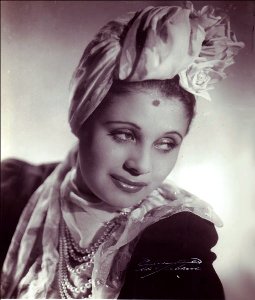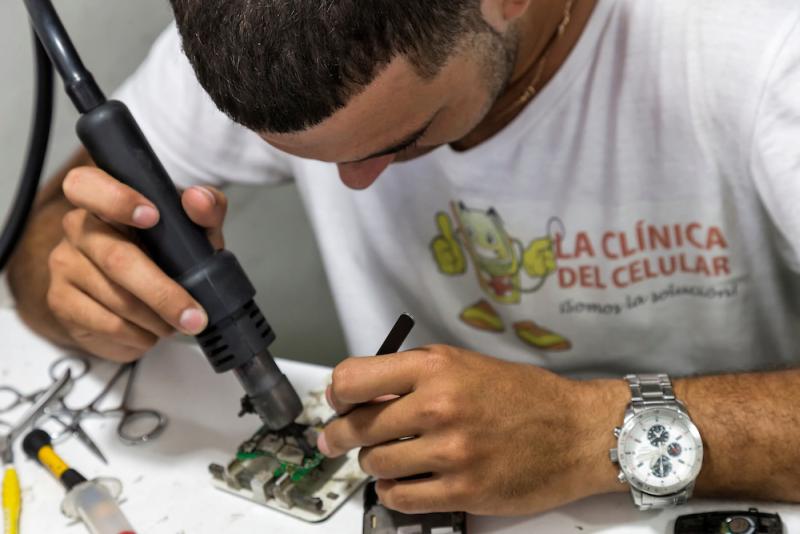Born on October 21, 1900 in the municipality of Guanabacoa, she nurtured from her musical environment: the touches of the drums at the Wemilere – a fiesta dedicated to the African Gods or Orishas-, and the finest musical education from a piano that still makes music inside some old house of this neighborhood in the outskirts of Havana.
Rita Montaner was born to Domingo Montaner, a white man, and Mercedes Facenda, a mulatto woman. She might have had Tainan roots as well, just like everyone in Guanabacoa. She might have even been blessed by the springs that shaped her into the world-class singer she became later.
She was born and grew up in the house located at number 18 on the Cruz Verde Street between Duarte and Amargura Streets. Maybe she was born close to the birth home of another genius of the song and the piano: Ignacio “Bola de Nieve” Villa. They performed together on many stages in Latin America and Europe with another genius of Cuban music: Ernesto Lecuona.
When I was a child, some 40 years ago, and I attended the Escuelas Pías of Guanabacoa which were later renamed the Jesus Garay Leon Elementary and Secondary School Complex, we used to go to the Municipal Library and the Cultural Centre. I was always impressed by the huge picture of Rita Montaner and the photo gallery of her in those places. In most of those pictures, she appeared next to a piano played by Bola de Nieve. He said about Rita in an interview once:
“I was Rita’s accompanying musician because there was no one else at the moment. I had no idea of becoming a solo singer when I took up the job. I was a complete stranger when I started in this job; nobody knew whether I was good, bad or average. I was just Rita’s accompanying player and that was it.”
Many details of the lives of Rita Montaner and Ignacio Villa fuelled my curiosity as a young woman yearning for information. They both died of cancer, they both played the piano, they loved Cuban music to which they gave their style and personality, they were both born in Guanabacoa – a village of indigenous people, springs and Afro-Cuban religions- and both toured together on several stages around the world and performed until their last breath.
One year ago, I read that the Argeliers Leon Center in Pinar del Rio kept some of the dresses, photographs and even records of this outstanding singer with music sheets dedicated to her by composer, pianist and orchestra director Moisés Simons – whose famous song “El Manisero” became a hit in the voice of Rita Montaner.
The intellectual Cintio Vitier said in one of his articles that Rita Montaner embodied best the national soul of Cuba,.
At the age of 22 year, she gained a huge success when she sang, backed by the orchestra directed by Luis Casas Romero, at the opening program of the Cuban Radio in the radio station PWX becoming the first female voice that was heard on the radio in 1922.
This sole event would have been enough to make her part of Cuban Radio history. But being a woman of a unique talent, which earned her the nickname of “La Unica,” she would add a long list of merits to her career that include: taking part in the first concert of Cuban traditional music, founding the lyrical theatre in Cuba, leading a successful career that would make her essential in the world of stage arts. She even acted in movies such as the “Romance del Palmar”.
Of her quality as an artist, renowned Cuban writer Alejo Carpentier wrote in 1929: “Rita Montaner was the one who did prolific work in the promotion of the Cuban rhythms from the stage of the Palace. She smelled of the Tropics. She had the fragrance of the Sun and the genuine joy of the common people.”
Rita Montaner was a singer, pianist, actress of radio, television and the movies. The chronicles and newspapers of the 1940s and 1950s would mention her constantly. They all agreed that Rita was so immersed in her career that every time she came up on the stage she would give her best surrounded in a creative rapture.
Montaner left her music that is still played and listened to today. Many Cuban mothers and grandmothers still hum the zarzuelas Niña Rita and El Cafetal, both composed by Ernesto Lecuona, the tango congo Ay, mamá Inés by Eliseo Grenet, her rendition of the zarzuela Cecilia Valdés, by Gonzalo Roig, and El Manisero by Moisés Simons.
As a pianist and a singer, she made the best of her performances in Latin America, Europe and the United States, where she left an imprint for her mastery in singing international songs and her unique way to perform Cuban music, which made her one of its best and most applauded performers worldwide.
She has influenced some of the greatest living legends of Cuban music. When Omara Portuondo, the Diva del Buena Vista Social Club, received the Latin Grammy for her album Gracias, in Las Vegas, she dedicated that award in her speech to all the Cubans, to Bola de Nieve, Rita Montaner, Benny Moré and her neighbors of Cayo Hueso.
Rita “La Única” took part in countless radio shows that presented the best of the Cuban humor and political critic. She broke records of audiences. Listeners in the first years of the radio waited for her characters La Chismosa and Lengualisa, who voiced the deepest thoughts and feelings of the Cubans of the time.
Her work on the Radio also brought her some enemies. She received death threats, boycotts and was even suspended from her work. Magazines and newspapers of the time have told that one day President Carlos Prío waited for her outside the building of the CMQ radio station and ran her over with his car breaking her leg. Dictator Fulgencio Batista also foretold her a palmacristi if she didn’t shut up in front of the microphones.
Fifty-five years after her death from cancer, Cuban culture and the Radio remember her as a true Cuban with a heart full of songs. Another great of Cuban radio and television, German Pinelli said once: “The people of Cuba carry her heart on their shoulders.” To us, Rita will always be “La Única”.
Translated by ESTI




